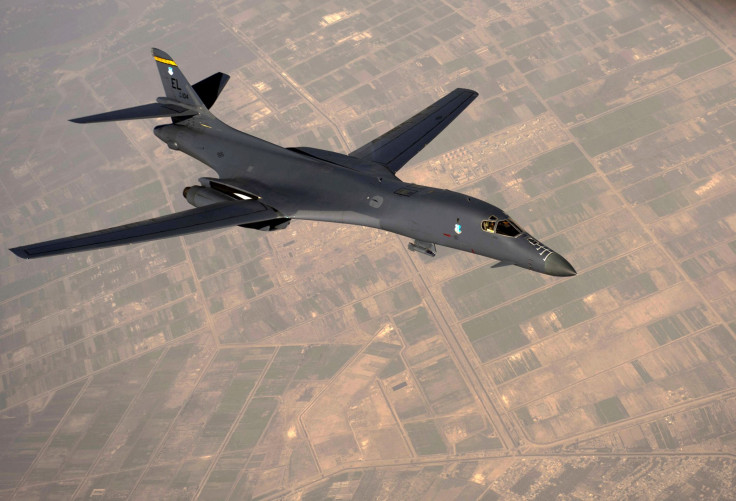USAF B-1Bs Fly Over South China Sea; Philippines Signals Resolve Sending War Boat To New Port
KEY POINTS
- The United States flew two Air Force B-1B Lancer bombers over the South China Sea on Tuesday
- This is the latest in the increasing number of U.S. military demonstrations in the area
- The flights were most likely meant to send a message to Beijing and the Chinese People’s Liberation Army
The South China Sea continues to be a hive of activity as the United States flew two Air Force B-1B Lancer bombers over the sea Tuesday. This was the latest in an increasing number of U.S. military demonstrations in the region that coincided with some movements in the Spratly Islands by Philippine Naval forces.
About four weeks ago, Lancer bombers from the 9th Expeditionary Bomb Squadron at Dyess Air Force Base, Texas, flew out of Ellsworth Air Force Base, located in South Dakota about 400 miles south of the Canadian border.
They appeared over the South China Sea as part of a 32-hour round trip that, according to the Air Force, demonstrated the new “dynamic force employment model” aimed at making its global bomber presence less predictable.
Tuesday’s flights originated from Guam where the Lancer Bombers had been deployed since May 1. According to a Twitter message Wednesday by the Pacific Air Forces, the mission demonstrated the Air Force’s ability to operate anywhere international law allows, “at the time and tempo of our choosing.”
Not all B-1B flights are so publicized, therefore, it is more likely the flights were meant to send a message to Beijing and the Chinese People’s Liberation Army. The deployment of the bombers on Guam was accompanied by about 200 airmen for training and to conduct operations with allies and partners.
Beijing described the flyovers as “provocative,” and blamed the U.S. for rising tensions in disputed areas of the resource-rich South China Sea.
One of those disputed areas is the Spratly Islands where China’s claims of the entirety of the sea overlap with the Philippine’s legally won claims within its exclusive economic zone (EEZ). Before the COVID-19 pandemic, Philippine President Rodrigo Duterte seemed to take a “soft” stance toward China’s aggressions and a harder stance toward the U.S., a historical ally of the archipelago.
Now, Duterte’s may be changing his views toward China. On May 13, the Philippine Navy ship BRP Ivatan became the first vessel to dock at the nearly completed port of Pag-asa (or Thitu Island), Manila’s largest occupied feature in the Spratly Islands.
Also, the Philippines' first modern multi-role frigate, the BRP Jose Rizal from South Korean ship maker Hyundai Heavy Industries, arrived in Subic Naval Base, a long-time American military base until 1992. A second Korean-made frigate, the BRP Antonio Luna is due for delivery in September.
China usually runs roughshod with its actions in the South China Sea including its building of massive artificial islands and ramming commercial fishing boats. It has to treat the Philippines a bit differently due to the international ruling of 2016 that went in favor of the Philippines over the sovereignty of the Philippine EEZ. Beijing is aware excessive pressure may influence Duterte to turn away from the Communist superpower and return courting favor from a willing U.S.
The U.S. Air Force missions follow an increasing number of freedom-of-navigation operations the navy conducts in the region to challenge what it calls China’s “excessive maritime claims.”

© Copyright IBTimes 2024. All rights reserved.





















